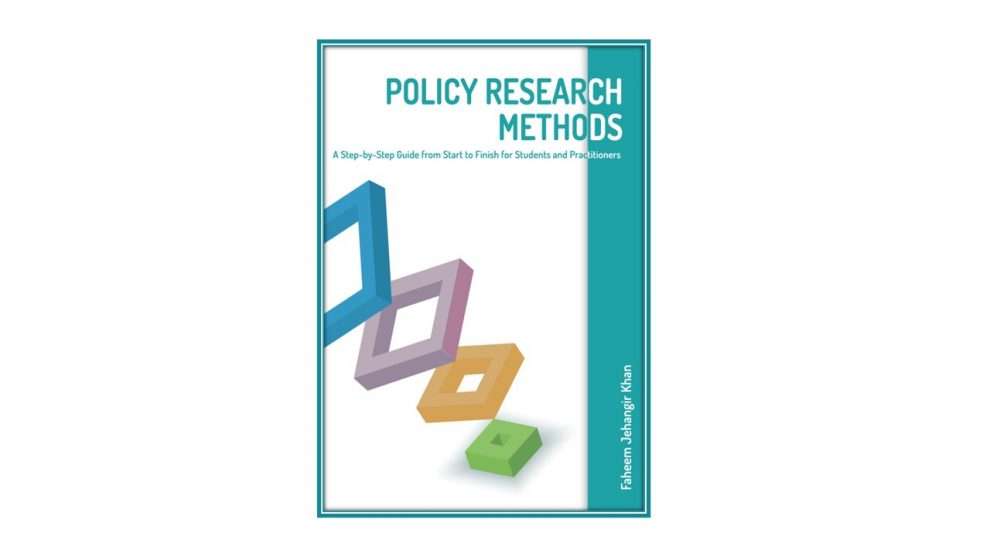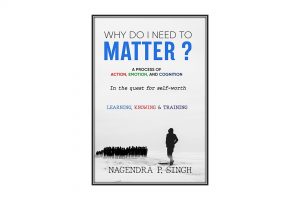Faheem Jehangir Khan (2022)
Publisher: Research for Social Transformation & Advancement (RASTA), Pakistan Institute of Development Economics (PIDE), Islamabad, Pakistan
Language: English
Pages: 90
ISBN 978-969-461-150-1 (Paperback)
Policy making could appear like magic for a novice, but sometimes even for its makers it could look like a sleight of hand. Policy making involves researchers working behind the curtain, in some sort of shadowy realm. What is policy research, and how is it done? Policy Research Methods, authored by Dr Faheem Jehangir Khan, a senior research economist with the Pakistan Institute of Development Economics (PIDE), Islamabad, Pakistan, removes the curtain by providing a step-by-step guide for students and practitioners on policy research. As the author mentions in the Preface, the book is written based on the author’s experience teaching research method courses and from his training experience in the public policy space. It addresses students’ questions on research problems, data, writing thesis, and supervision.
The book is divided into three parts: Part 1. Research orientation; Part 2. Research methodology; and Part 3. Managing the research process.
I will briefly summarize these sections so as to provide a gist of the contents. Part 1 on Research orientation stitches together various fundamental concepts in research. This chapter details the fundamentals of research, data, and the purpose of policy research. Part 2 details the research methods used for policy research. This chapter highlights the critical steps in research – qualitative, quantitative, mixed, case studies, and action research methods. The chapter also briefly talks about evaluation research. Part 3 on Managing the research process deals with the research study process from research idea to presentation and dissemination of the study. In this chapter, the author divides the research planning into five stages: 1) research idea; 2) background research; 3) research scope; 4) research design; and 5) data analysis.
Reading the book, we can gauge that the author’s experience is derived from teaching research methodology courses. It is written in an easy-to-read format. The book is well-designed, with simple but eloquent graphics for visualization. The drawback of this book is that it is generic and basic in its content, with very few technical details. Policy research has advanced greatly in the last decade (Impact assessment techniques), and the book needs to provide the latest tools and approaches. There are some thumb rules suggested in the book (like a sample size of 4-12 for the homogenous population and 20-35 in the case of the heterogeneous population), but I am not sure how it defines a homogenous and heterogeneous population. It would have been a good idea to corroborate this with appropriate references to the studies based on which such thumb rules are formed. Though the author says it’s a step-by-step guide to policy research, it provides information only on the basics of policy research. I presume the author aimed to provide only the basic tenets of policy research.
This book is helpful for undergraduate and master’s students in understanding policy research. The book is a simple version of policy research and would help as reading material for Policy Research 101. I am uncertain about its utility for policy practitioners unless they are planning to acquire some knowledge of the jargon used in policy research. Nevertheless, it is a good resource material for general scholars on policy research. The book can be downloaded freely from the website of the Pakistan Institute of Development Economics (https://pide.org.pk/).
Subash SP
 Subash SP, Scientist (Agricultural Economics), ICAR-National Institute of Agricultural Economics and Policy Research. He is a PhD scholar/ATSAF Fellow with CGIAR-CIMMYT, The Center for Development Research, University of Bonn, Germany.
Subash SP, Scientist (Agricultural Economics), ICAR-National Institute of Agricultural Economics and Policy Research. He is a PhD scholar/ATSAF Fellow with CGIAR-CIMMYT, The Center for Development Research, University of Bonn, Germany.





Add Comment